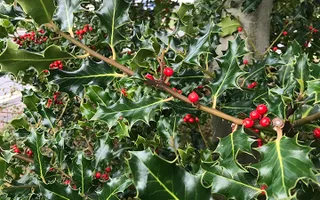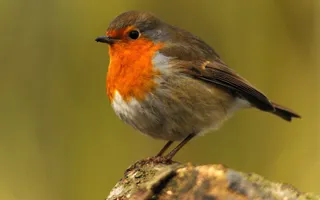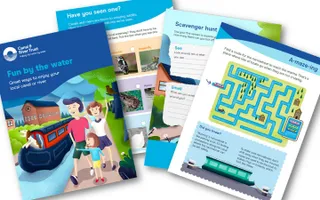More than just a Christmas carol, holly and ivy helps those birds who stay behind survive when the temperatures drop.
Free family activity guides
Download a free booklet of canal-themed activities that you can enjoy by the water or at home
The charity making life better by water
Making life better by water
During the long winter months, many of our waterway birds pack up and migrate to warmer climes. But for those who stay behind, winter can be tough.
More than just a Christmas carol, holly and ivy helps those birds who stay behind survive when the temperatures drop.
Like all animals, birds need to fatten up to make it through the harsh winter conditions. However, there’s rarely a Christmas roast waiting for them on the table. But that doesn’t mean the birds will starve.
While many plants go dormant in the winter, holly berries provide much-needed food. Brightly coloured and tempting, these festive fruits (which are poisonous to us and most of our pets) attract winter birds. In return, birds help to spread the seeds, enabling new holly plants to grow.
Ivy berries are another good food source in winter. It’s estimated that these berries have the same number of calories as a chocolate bar, gram for gram. Darkly coloured and rich in fat, they grow in abundance along our canals and rivers.
They usually bloom in November, but birds tend to avoid them until December, eating the shorter-lived fruits first and saving the robust ivy berries for the tough winter ahead.
The harsh spikey leaf of holly makes it the perfect shelter for our smaller bird species, protecting them from predators, who often roost among the branches.
With its ability to grow and spread rapidly, ivy often gets a bad rap. However, it has also been hailed as one of the best plants for wildlife. Its waxy leaves provide amazing shelter for our winter wanderers, who can nest safely.
Without these plants, our canal-loving winter birds would find it hard to survive the winter, with little food and shelter.
Birds and other winter wildlife need all the help they can get in the colder months. Here’s how you can give them a helping hand.
Keep it natural: Avoid removing dead leaves and branches where possible. These habitats are crucial for wildlife during the colder months.
Build a brush pile: Create a pile with branches of varying sizes, leaving small spaces for birds to roost safely and stay insulated. Position it to protect them from strong winds.
Feed the birds: Stock feeders with seeds and nuts, which provide essential fats and calories. Avoid salty foods, as birds cannot digest these.
Provide clean water: Birds struggle to find fresh water in winter, so a bird bath can be life-saving – just make sure yours doesn't freeze over.
Download a free booklet of canal-themed activities that you can enjoy by the water or at home
Last Edited: 24 April 2025

Sign up to our newsletter and discover how we protect canals and help nature thrive



